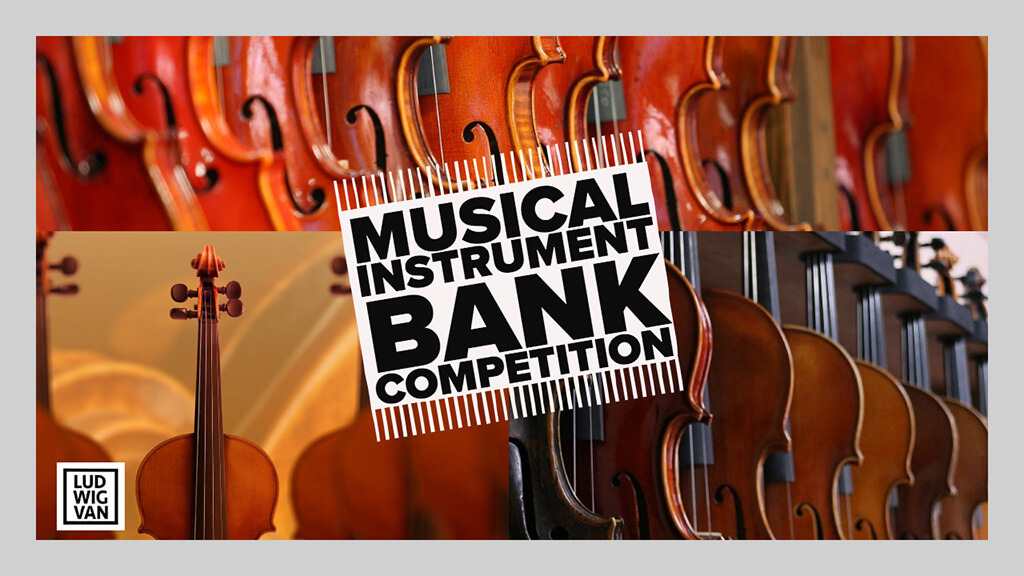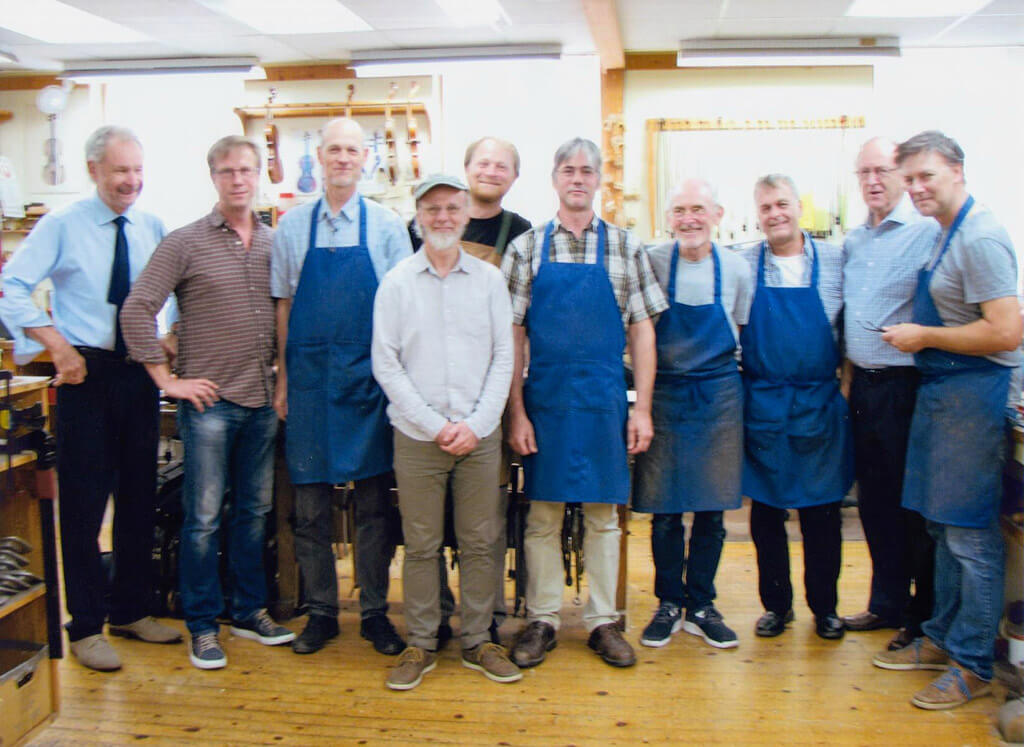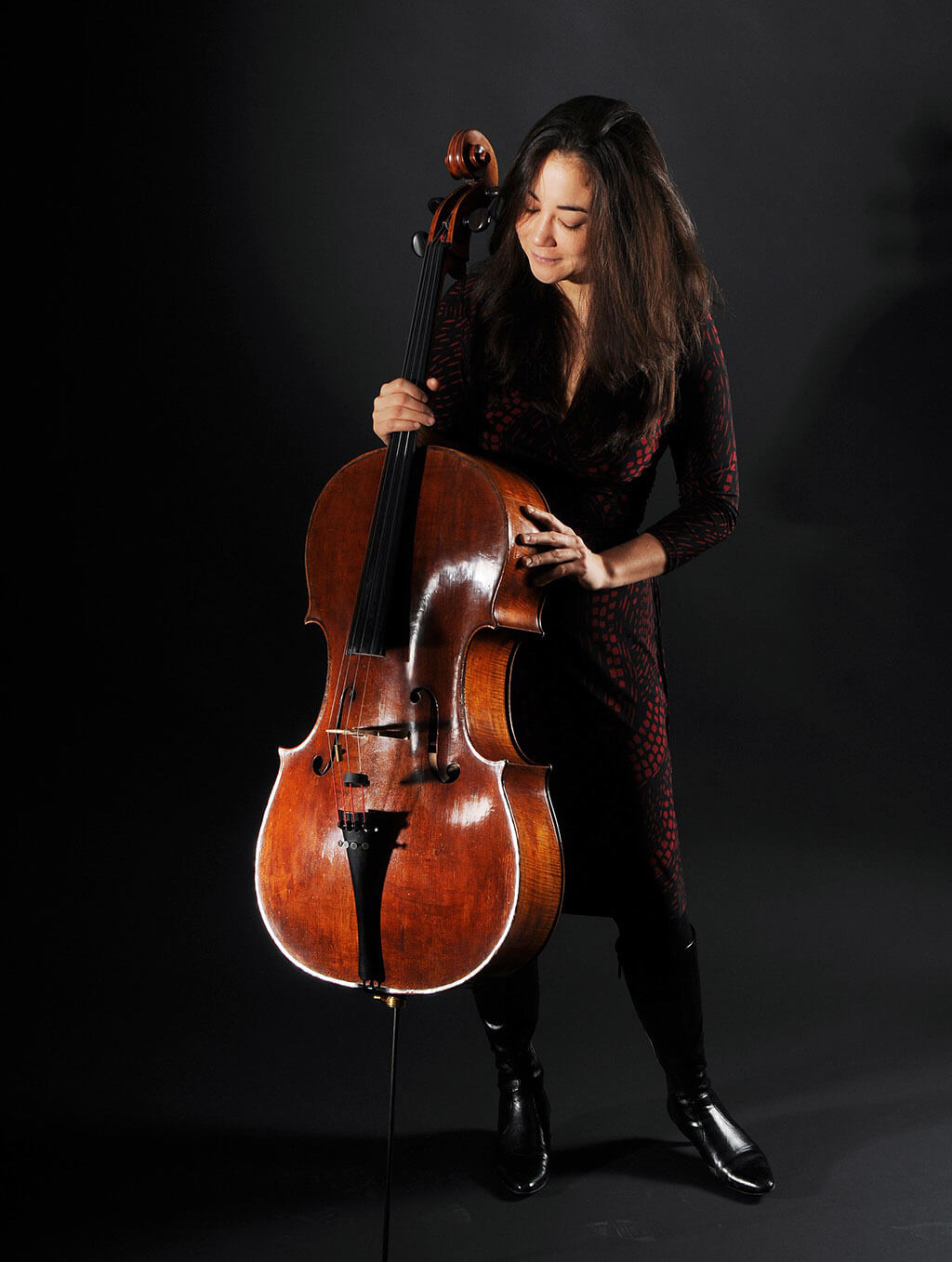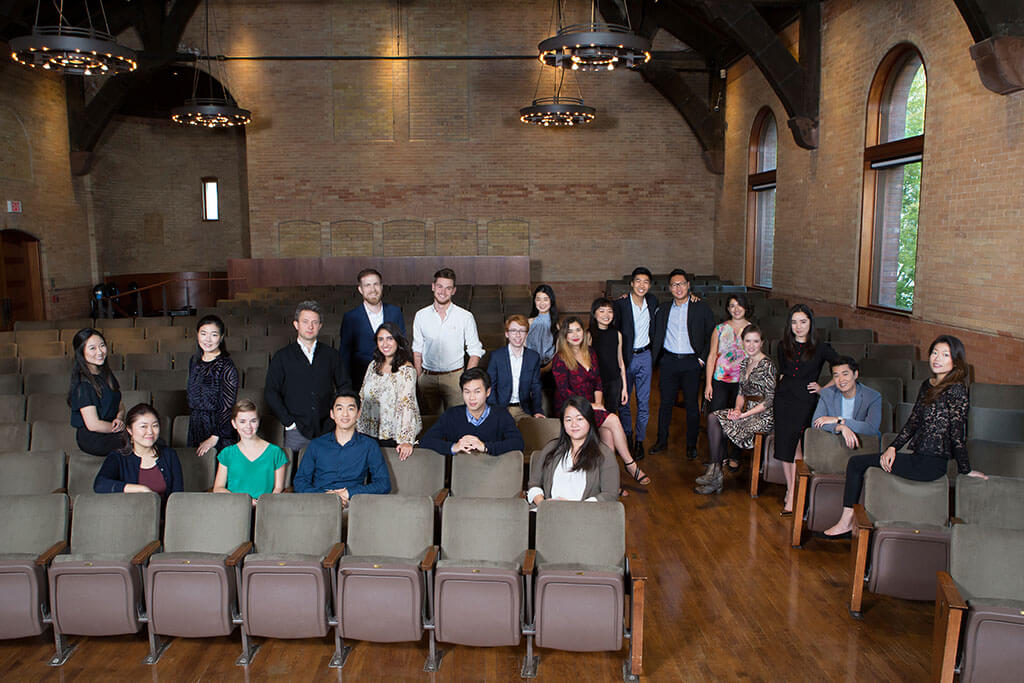
Today, the Canada Council for the Arts announced a new group of Musical Instrument Bank Competition winners. The list includes many familiar faces to Torontonians: Emma Meinrenken, Christopher Whitley, Blake Pouliot, Bora Kim, Jasmine (Mengjia) Lin, Emily Kruspe, Cameron Crozman, and Ji Soo Choi.
Though the general public may not have heard of the Musical Instrument Bank (MIB), this may be the most important competition for developing young Canadian and permanent resident musicians, as winning will lead to the possession of a legendary instrument, starting today, for the next three years — and possibly beyond.
The Price Of Excellence
Becoming a musician can be a quite an expensive process, especially for classical string players. While one could pick up a festively painted ukulele for under fifty dollars at the local shop (or for very few dollars indeed at a charity shop on a lucky day), rigorous professional training quickly adds up — lessons, purchasing scores, travels, and finding the right instrument to speak through. And it is not uncommon to take years of searching followed by a lifelong ‘mortgage’ to afford that instrument. Top-tier string instruments are dealt in millions: Anne Akiko Meyer’s Vieuxtemps Guarneri, currently the most expensive violin in the world, sold for over $16 million (USD) in 2013.
In the 1980s, Canadian Cellist Denis Brott, facing that enormous task of finding the instrument and a way to fund it, took up his pen and started to write:
“… To be able to use the instrument, mastering the mechanical, as a vehicle of that expression, the person can communicate that emotive process, inspire it in others, elicit a response, and they become a compelling performer… I wrote to some 50 corporate executives, and one said: why don’t we meet…”
And so the Canada Council’s Musical Instrument Bank program was born. The idea was an old one, as the first proposal by the Canada Council’s Arts Advisory Panel was made in 1975. But it wasn’t until 1985 that a generous bequest of $100,000 from the Barwick family of Ottawa was made to MIB’s operating fund. Soon after, Ric W. Heinl, the grandson and current president of Geoge Heinl & Co, who is passionate about the restoration and stewardship of these living, rare works of art, joined the effort.
At the beginning, there were two instruments: a 1706 Turner-Brott Tecchler cello (1987 acquisition; Tecchler is currently on the career loan to Brott), and a 1717 Windsor-Weinstein Stradivari Violin (1989 acquisition). Today, the collection boasts over $41 million worth of violins, cellos and bows, from legendary luthiers such as Stradivarius and del Jesu. They are loaned to the competition winners for a 3-year period, and the council typically allows up to 3 loans to a musician.
“Over the years, it became my mission to grow the bank, to keep the instruments for Canada,” says Heinl. “There are foundations with hundreds of instruments, and we are working hard to catch up. Some of these instruments are on loans to the program, and some were purchased by Canada Council. And our job [at Heinl’s], is to keep these rare works of art protected; to protect, preserve and maintain these instruments — it’s an honour. They are magic.”
The current format of a three-year loan started in 2000; once there were sufficient instruments to run a larger scale competition. Though there are many quality instrument loan programs elsewhere in the world, through private collections, schools, orchestras and various institutions, MIB is a very special resource for Canadian musicians.
Andrew Shaw, donor of the ca.1830 Shaw Adam Cello bow, knows the situation only too well. Trained as a professional cellist first, Shaw branched out into the world of business and worked with Woods-Gordon, Frederick Harris Music (President, 1985-2002), and the Toronto Symphony Orchestra (CEO, 2002-2015).
“I was fortunate to have bought a great cello, and consequently, I was poor as church mouse: beans and toast,” quipped Shaw. “But I remember that one day, walking into the place that I used to go to get my cello serviced, they said I must try this bow, and I said ‘I have a good bow, and I cannot… [Laughs]. I said alright, and played one note. I said ‘Okay, how much?’
Shaw soon realized his calling was in business and decided to move on:
“It wasn’t reasonable for me to have this cello sitting and doing nothing, so I sold the cello through a US dealer, and the bow, I lent it to a friend in the States. After four years, he said he should really give it back, as he couldn’t afford to buy it… and between selling my cello and lending this bow, MIB came into existence. So I got talking to Ric (Heinl), who happened to be in charge of taking care of the IMB instruments, as having a great bow can sometimes have more of an impact than having a new instrument in some cases. So I donated it [1999].”
For instrument-related issues, including possible donations, Heinl is always there to see if it is worthy, and how much work it requires to be loan-worthy. He gifts his time and expertise to our community, and the donor is responsible for payment for any work required.
“Though [they] charge money for services, those charges are for the people who are working on the instruments. My time is my gift — the weeks I spend with artists, time spent on consultations. And I am honoured to do it, to be part of this great stewardship.”

How It Works
The Audition week is often referred to as ‘trial week.’ The selected participants for the live audition in Toronto are given 1.5 hours each, to try out the bank instruments at Heinl’s, with Heinl’s company. This year, there were 23 people who came out to try 18 violins. And to get these instruments ready for the trial week (18 violins and 5 cellos) is no small task. Around mid-August, the winners are required to return the instruments to the shop, where they are thoroughly examined and fine-tuned for a very short turn-around.
For the preparation for the 2018 competition, Heinl reassembled a group who were “on top of their game.” It is much like a homecoming. Normally there are five people in the shop upstairs and myself. But for the preparation, we had a total of ten people work on these instruments.”
According to luthier Lydia Rosetta, Geoge Heinl & Co and the Canada Council see the program as stewardship.
“They manage this collection in such a way to preserve it; to take the best care possible. The musicians also have the responsibility; they aren’t just players, they are the custodians. It’s been really lovely to help these young and upcoming greats. They’ve proven that they deserve these instruments, and they understand the importance of preservation of the historical value of these works of art. [Heinl] is a great steward and the team comes together to help out, to clear the decks, then just focus on the instruments.”
Troy Milleker, another luthier who has been involved from the beginning, noted the year 2000 as the most significant for the program. “That was the first year we had a cello in the collection (the bonjour Strad), and the competition format started then.”
The elite instruments, such as Andrew Shaw’s cello, usually find their way into the international market, and once they are out, it becomes so much harder for Canadian musicians to access them.
“I remember when I joined the TSO, Emmanuelle Beaulieu Bergeron (Associate Principal Cello/TSO) came up and said ‘I had your bow! *(2006-2012)’ and I said ‘What? That’s terrific!’ She had to give it back, but she really enjoyed it, and without IMB, the bow, like the cello, would’ve left Canada.”
The list of MIB laureates is impressive, and its impact on individuals is priceless.
Playing Matchmaker

“The way that these instruments affect our development is huge, says Rachel Mercer, a prominent cellist who has had depended on instrument loans for the past 22 years; first from Banff Centre, then Conservatorium van Amsterdam where she studied, then from the Canada Council. “All great instruments have their own personality, and it is a journey first to learn to manage them physically, and then try to find a way for that personality to enhance or blend with yours… such instrument opens a whole new world of possibilities, that then becomes a part of your expressive palette.”
To date, Mercer has enjoyed an exceptional four instrument loans with MIB: McConnell Nicolaus Gagliano (1824), Bonjour Stradivarius (1696), Joannes Guillami (1769) and Newland Joannes Franciscus Celoniatus (1730) cellos. With these instruments, Rachel has toured the world as a soloist and chamber musician, recorded solo, duo and quartet albums, and won her position as Principal Cello for the National Arts Centre Orchestra with the Celoniatus in 2017.
“For my last loan, I was torn. I had played 4 cellos from the bank, and enjoyed them all for different reasons, and the hard decision was whether to take another 3 years with the Guillami, which I knew I loved and already matched my voice, or try the Celoniatus, an instrument which an edginess that was not naturally a part of my playing… it was a risk, but the decision was a good one. Because of its quality, focus and that edge, I was able to play with nuance that would not be possible with a lesser instrument.”
Winning his first loan at age 20 with the Bonjour Strad, (2015-18), Cameron Crozman took his cello on an international adventure, completing his studies at the Conservatoire de Paris, and touring the world in venues such as the Shanghai Oriental Arts Centre, Berliner Philharmonie and Paris Philarmonie.
“In 2015, I honestly have to say that I didn’t go into the competition expecting too much. You can only imagine how thrilled I was when I got the call saying that I would be able to pick the Bonjour Strad. I think it was one of the most exciting moments of my life up to that point… It was a pivotal point in my life, I was about to finish my Master’s in Paris, and the jury deciding that (I) was ready to play on a $12 million Strad, the instrument par excellence of the concert soloist, was an incredible confidence booster. It’s hard to describe how much it means to have people believe in you like that.”
With the live audition being limited to 20 minutes, applicants take the utmost care to prepare for the competition. The preliminary screening for MIB competition starts with a comprehensive submission package: a personal statement, an explanation of how the loan would help one’s musical trajectory, a description of the current instrument in use (maker, year made, approximate value, and other relevant details), current résumé, a biography, list of repertoire. The recording must be from last 12 months, preferably during a live performance, and consisting of three separate categories: Baroque/Classical, Canadian and performer’s choice.

After the first paper round, musicians are invited to the competition. It runs for the whole week, and the juries create a priority ranking for winners to select the instruments.
Sarah Brown, Prize Program Officer at the Canada Council for the Arts, says she sees around 70 applicants for violin and cello each year. “I always feel an excitement reading through the applications to see all these talented musicians with so much potential. And they share their personal growth as musicians and the relationship they form with the instrument. I feel like I get to be part of their journey. It’s also very interesting to see the research by the winners on the instruments, uncovering the history, travelling to where it was made and learning about other musicians, composers and owners who have left their mark on the instrument.”
According to Heinl, the process really starts as the musicians head back to their daily lives, with their new and demanding companion. “They are soul mates, they bond. They develop your strength and your weaknesses, and they will support you when you are weak.”
With the Bonjour cello, Cameron Crozman said it took him the better part of a year to get to the point where he was comfortable on the instrument.
“The instrument really tests you as a player to see if you can let go enough for it to start revealing its colours. And then, there are an infinite number of possibilities available. Up to the very last day of my loan, I was learning new things that made the cello sound even greater than I thought possible.”
Crozman culminated his experience of last few years of studying at the Paris Conservatoire, and his journey with Bonjour, in his first album, Cavatine, with pianist Phillip Chui, which will be released on 25 January 2019 by ATMA Classique with launch events planned in Montreal and Toronto.
It’s interesting to note that sometimes, winners also chose to ‘repeat’ an instrument, and take it for a second loan. This is because there is a certain element of luck involved. The first place winner gets to have a choice pick, then the second, and so forth. If you are the last prize winner, then yes, rather than choosing, you would be given a loan. Therefore, some may speculate on certain ‘repeat’ loans to be circumstantial. But for Véronique Mathieu (2006-2009, 2009-2012 prize winner), the 1715 Dominicus Montagnana was the perfect choice for both loans.
“From the moment I played a few notes on it, and after playing on it for a few months, I realized that it was my dream violin, Mathieu said. “I feel so fortunate to have had the opportunity to spend six years with such an amazing instrument.”
One may also wonder: so many beautiful violins and cellos, but no violas? Viola jokes aside, there is a legitimate reason: lack of standardization.
As luthier Troy Milleker explains it, “the collection needs several [violas and basses] in varying sizes, and it makes it incredibly difficult to put on the offering.”
The Journey Begins
Today, the proud winners of 2018 Musical Instrument Bank Competition winners will start their journey officially. They are required to bring in the instrument once a year for a thorough inspection at Heinl’s, and any repairs needed are the players’ responsibility (Canada Council provides instrument insurance). The instruments will travel far and wide, with their musicians.
The world is once again excited to hear these people and their new instrument companions.
It’s a wonderful day.
NB: Some quotes have been edited for clarity.
[Correction: Rachel Mercer won Associate Principal of NACO with the “Shark” (Guillami) [not the Celoniatus] and won the Principal position with the Celoniatus.
- CRITIC’S PICKS | Classical Music Events You Absolutely Need To See This Week: July 22 – July 28 - July 22, 2024
- CRITIC’S PICKS | Classical Music Events You Absolutely Need To See This Week: July 15 – July 21 - July 15, 2024
- CRITIC’S PICKS | Classical Music Events You Absolutely Need To See This Week: July 8 – July 14 - July 8, 2024



